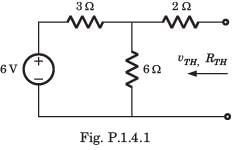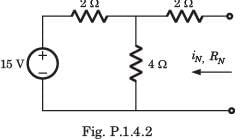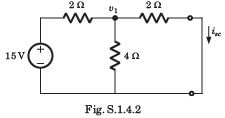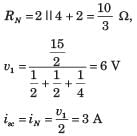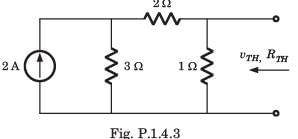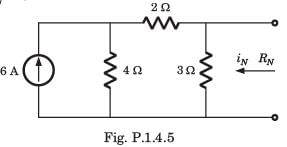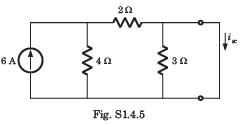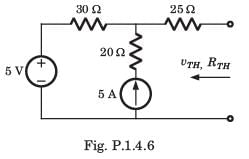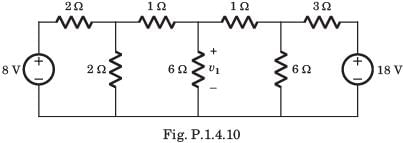Electrical Engineering (EE) Exam > Electrical Engineering (EE) Tests > Test: Network Theorems - 1 - Electrical Engineering (EE) MCQ
Test: Network Theorems - 1 - Electrical Engineering (EE) MCQ
Test Description
10 Questions MCQ Test - Test: Network Theorems - 1
Test: Network Theorems - 1 for Electrical Engineering (EE) 2025 is part of Electrical Engineering (EE) preparation. The Test: Network Theorems - 1 questions and answers have been prepared
according to the Electrical Engineering (EE) exam syllabus.The Test: Network Theorems - 1 MCQs are made for Electrical Engineering (EE) 2025 Exam.
Find important definitions, questions, notes, meanings, examples, exercises, MCQs and online tests for Test: Network Theorems - 1 below.
Solutions of Test: Network Theorems - 1 questions in English are available as part of our course for Electrical Engineering (EE) & Test: Network Theorems - 1 solutions in
Hindi for Electrical Engineering (EE) course.
Download more important topics, notes, lectures and mock test series for Electrical Engineering (EE) Exam by signing up for free. Attempt Test: Network Theorems - 1 | 10 questions in 30 minutes | Mock test for Electrical Engineering (EE) preparation | Free important questions MCQ to study for Electrical Engineering (EE) Exam | Download free PDF with solutions
Detailed Solution for Test: Network Theorems - 1 - Question 1
Detailed Solution for Test: Network Theorems - 1 - Question 2
Detailed Solution for Test: Network Theorems - 1 - Question 3
Test: Network Theorems - 1 - Question 4
A simple equivalent circuit of the 2 terminal network shown in fig. P1.4.4 is
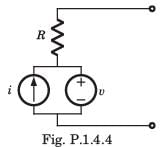
Detailed Solution for Test: Network Theorems - 1 - Question 4
Detailed Solution for Test: Network Theorems - 1 - Question 5
Detailed Solution for Test: Network Theorems - 1 - Question 6
Test: Network Theorems - 1 - Question 7
The Thevenin impedance across the terminals ab of the network shown in fig. P.1.4.8 is
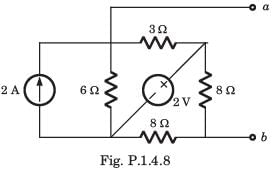
Detailed Solution for Test: Network Theorems - 1 - Question 7
Test: Network Theorems - 1 - Question 8
For In the the circuit shown in fig. P.1.4.9 a network and its Thevenin and Norton equivalent are given
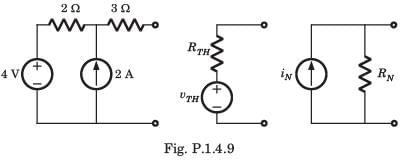
The value of the parameter are
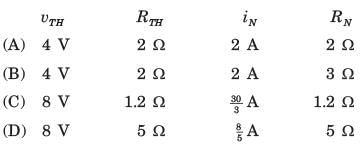
Detailed Solution for Test: Network Theorems - 1 - Question 8
Detailed Solution for Test: Network Theorems - 1 - Question 9
Test: Network Theorems - 1 - Question 10
A voltage source having some internal resistance delivers a 2A current when a 5Ω load is connected to it. When the load is 10Ω, then the current becomes 1.6A. Calculate the power transfer efficiency of the source for a 15Ω load.
Detailed Solution for Test: Network Theorems - 1 - Question 10
Information about Test: Network Theorems - 1 Page
In this test you can find the Exam questions for Test: Network Theorems - 1 solved & explained in the simplest way possible.
Besides giving Questions and answers for Test: Network Theorems - 1 , EduRev gives you an ample number of Online tests for practice
Download as PDF


